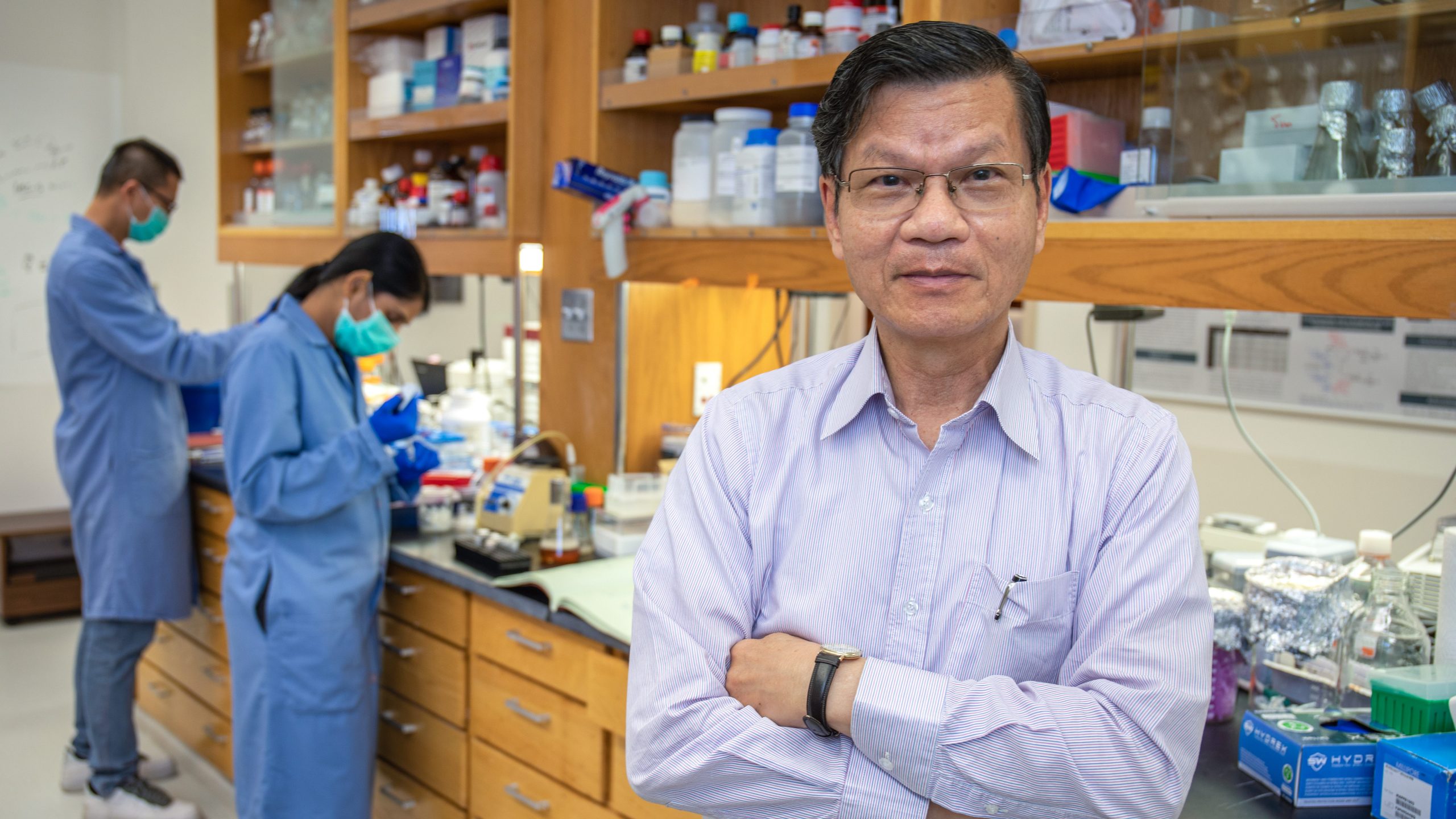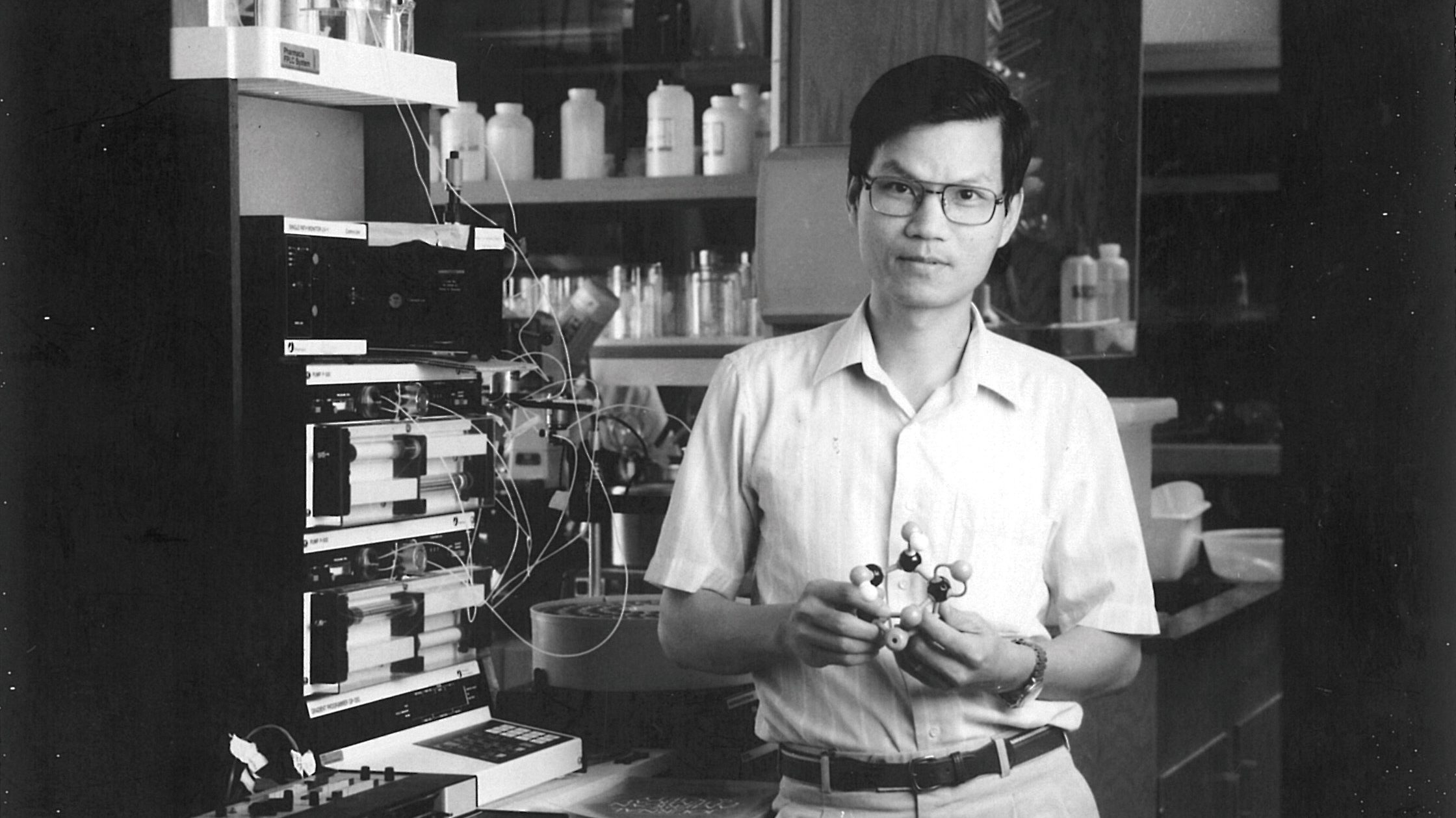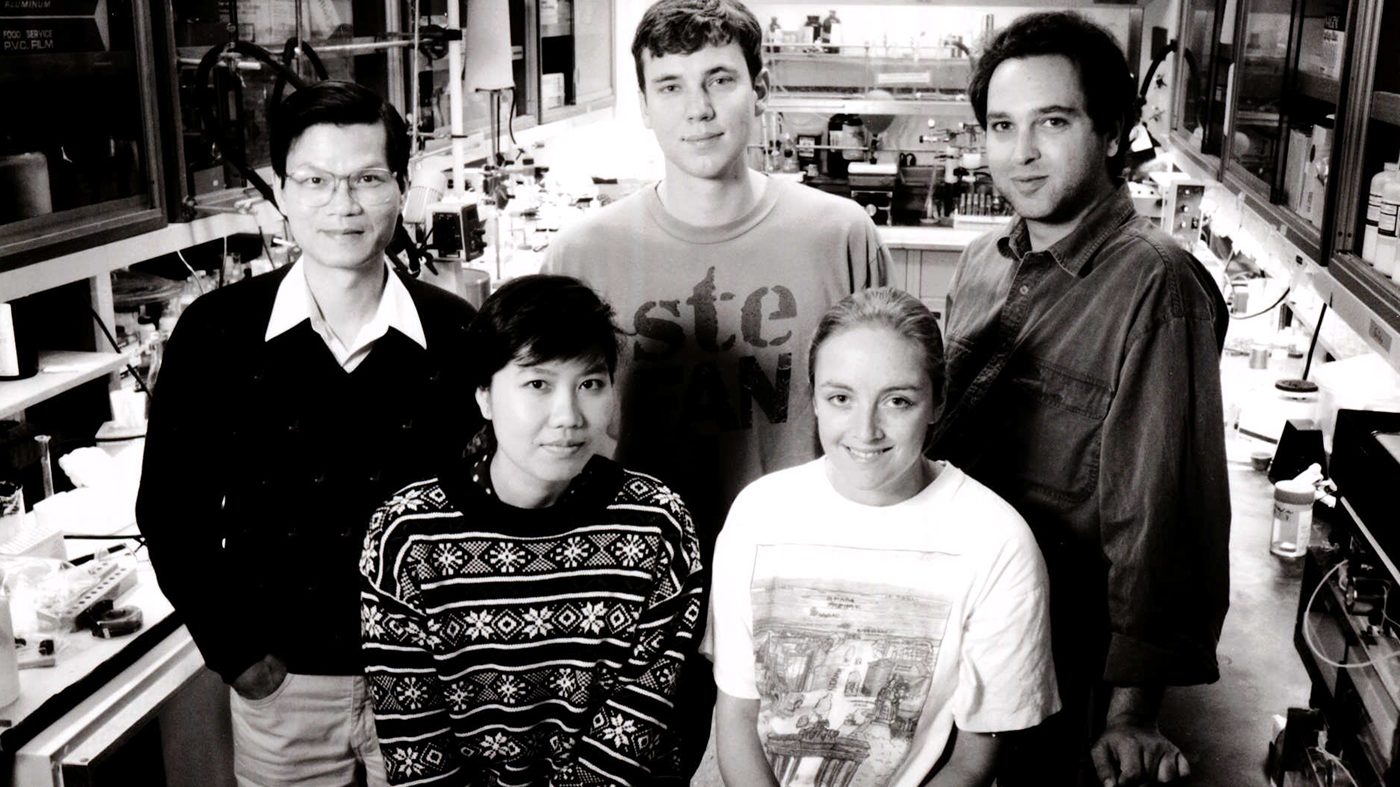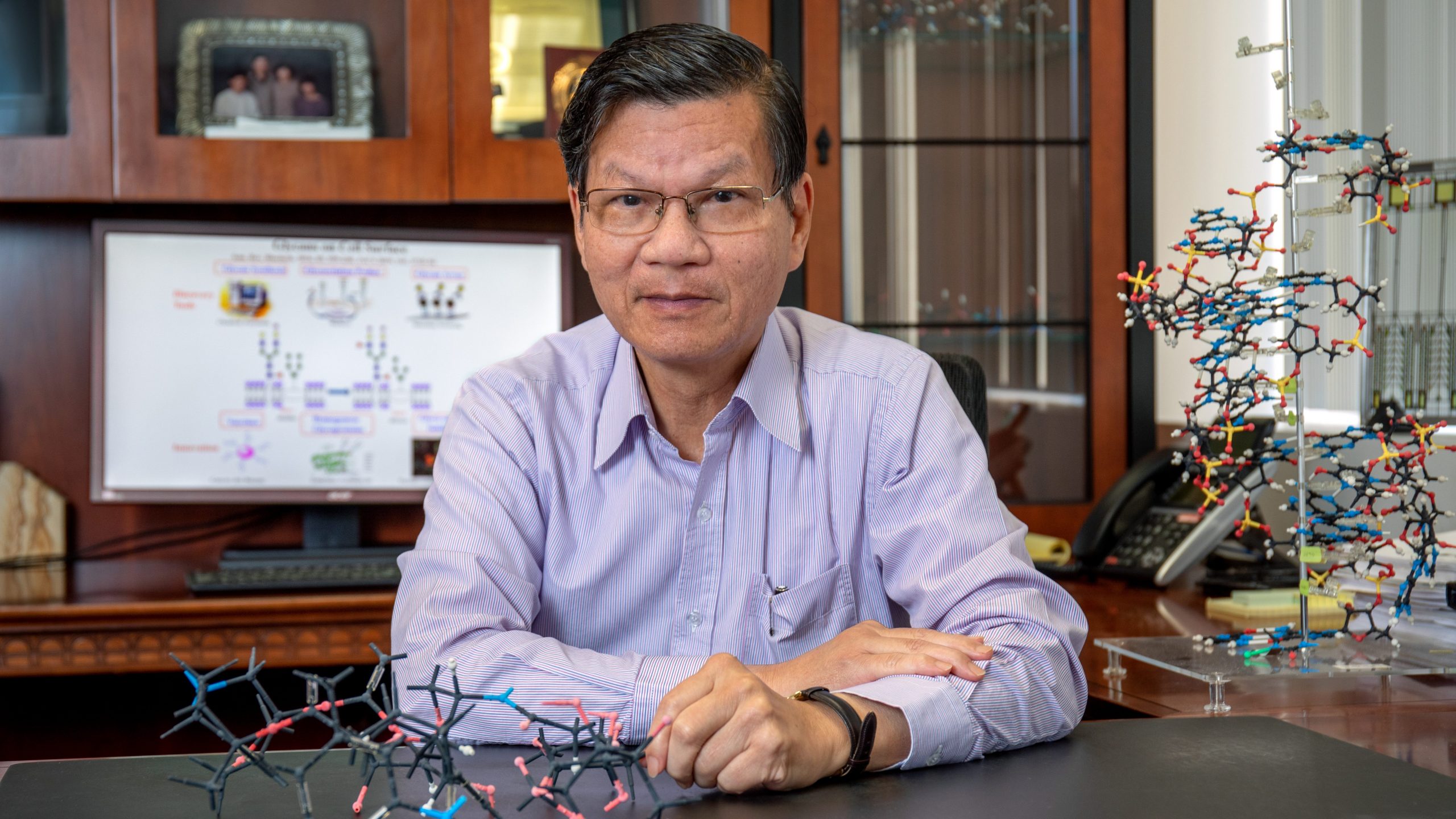
For a long time, scientists who studied the biological properties of sugars faced a bitter struggle.
A type of carbohydrate, along with starch and cellulose, sugars are vital to our health and involved in a vast array of processes in our bodies. Complex sugars known as glycans are involved in everything from the creation of new cells to the immune system’s response to viral infections.
But glycans are also notoriously difficult to study and, as a result, their precise role in our physiology and in disease long remained a mystery to scientists.
In recent years, researchers have made rapid strides studying glycans, thanks in large part to pioneering research by Scripps Research Professor Chi-Huey Wong, PhD. A chemist by training, Wong developed a wide range of tools for synthesizing and studying glycans and molecules with glycans attached to them, laying the groundwork for the burgeoning field of glycobiology (“glyco” means sweet in Latin).
By removing the barriers to studying how sugars operate in the body, Wong paved the way to discoveries on everything from how sugars control how proteins are manufactured in cells to the development of vaccines and drugs for diseases such as influenza, cancer, and HIV.
“Chi-Huey has been the most influential contributor to the synthesis and evaluation of carbohydrates and the field of glycobiology,” says Dale Boger, PhD, a longtime collaborator with Wong and professor of chemistry at Scripps Research. “His pioneering technology has made it possible to study the role of complex carbohydrates and glycoproteins in biology and has led to their development as therapeutics.”

Crisis gives way to new ideas
While Wong’s research has had a significant impact on biomedical research, his interest in sugar chemistry was piqued not by some vexing biological question, but rather by the energy crisis of the 1970s. Wong had left his native Taiwan to study for his PhD at Massachusetts Institute of Technology in Boston, where soaring oil prices led to fuel shortages and long lines at gas stations.
“When I was working on my doctorate at MIT, there was a lot of discussion about environmentally friendly chemistry and how to make chemicals at room temperature, which wouldn’t require so much energy,” says Wong, who holds the Scripps Family Chair Professor of Chemistry. “I thought using enzymes, which are very efficient and catalyze a wide range of biological reactions, would be the best way to accomplish this.”
Among the classes of molecules that Wong and his collaborators considered synthesizing were carbohydrates, one of the most abundant materials found in nature. Often referred to as “sugars” in reference to the simplest carbohydrates, such as glucose and sucrose, carbohydrates are important in industrial applications as well as in biology, chemistry and medical research.
In particular, researchers were looking for ways to synthesize oligosaccharides—a form of carbohydrate, which includes glycans—that were nearly impossible to isolate from natural sources. Wong realized that developing a way to create oligosaccharides in the laboratory could be a huge boon to scientific research and for industrial applications, including in the food industry.
One of the most difficult problems for biologists has been deciphering how glycans interact with other biological molecules to control their structure and function—a process called glycosylation. Many of the proteins in our bodies, for instance, have glycans added to them after they are manufactured from our DNA, turning them into molecules known as “glycoproteins.” These proteins often move to the surface of the cell, altering how a cell interacts with other cells or with bad actors in our bodies, such as viruses, bacteria and cancers. Thus, glycosylation is a critical tool our body uses to control the staggeringly complex symphony of cell and organ function.
A person’s blood type is an example of a biological effect of glycosylation. Protective molecules made of glycans bristle from the surface of red blood cells and the structure of these molecules determines the person’s blood type. While this is a relatively straightforward effect, the vast majority of glycosylation mechanisms in the body remain a mystery.
“We know glycosylation plays a central role in a wide array of cellular communication and function, but we still know very little about what exactly is happening,” says Wong.

The breakthroughs begin
As a student at MIT in the 1980s, Wong realized that to crack the sugar code, scientists needed a better way to make sugars. At the time, synthesizing complex sugars molecules was prohibitively time consuming and expensive, slowing the pace of glycobiology to a crawl. Wong suspected that using enzymes—substances that facilitate chemical reactions in living organisms—to make sugars in the lab would make the process far more efficient.
His first major breakthrough was developing a technique that used enzymes to build oligosaccharides, chains of single sugar molecules linked together to form complex structures. The nomenclature gets confusing, but “glycans” in common scientific parlance refers to biologically active oligosaccharides. By regenerating certain key ingredients in the reaction, called cofactors, on the fly as the reaction progressed, his method used far less source material than previous techniques. This dramatically reduced the cost and time required to synthesize oligosaccharides while also lessening the environmental impact of such chemistry, allowing researchers and industry to produce oligosaccharides at scale for the first time. Using the technique, Wong and his colleagues were the first scientists to synthesize a glycoprotein in the laboratory—a major accomplishment in chemistry and glycobiology. The method has been used to make glycoprotein pharmaceuticals including antibodies for immunotherapy.
Scientists could now much more readily produce complex sugars to study. The next challenge that Wong took up was controlling exactly which sugars. There are nine simple sugars in the body, single molecules called monosaccharides, which include glucose and galactose. This seems straightforward enough until you start building them into linked chains of more complex molecules. The possibilities soon get out of control. With those nine monosaccharides, for example, it’s possible to create more than 15 million different combinations of a molecule made from four monosaccharides chained together.
When Wong entered the field, the process of synthesizing oligosaccharides with precisely ordered backbone chains of simple sugars was an arduous process limited to specialized laboratories. Wong’s solution to this problem was elegant but powerful. He and his collaborators developed a technique that leveraged computers to improve chemistry. Their method used a computer program that allowed scientists to enter in the desired sequence of monosaccharides in the molecule they wanted to create.
The program then ranked the monosaccharides based on how reactive they were—in other words, how readily they interacted with other molecules. Based on this reactivity, the program then gave the chemist a recipe that used building blocks made of units of three sugars bound together. The recipe dictated that these three-sugar building blocks be added in certain order to a reaction mixture, with the most reactive added first and the least reactive last. Wong’s system, which he dubbed technique “programmable one-pot synthesis,” was a vast improvement over the tedious and costly approaches that proceeded it. With the aid of deep machine learning, the system now has more than 50,000 building blocks with predicted reactivity for programmable synthesis.
Wong’s seminal contributions to glycoscience have been widely acknowledged. He has received some of the most prestigious awards in chemistry, including the ACS Arthur C. Cope Award, the Wolf Prize in Chemistry and the Royal Society of Chemistry Robert Robinson Award. He is currently a professor in Scripps Research’s chemistry department and was the president of Academia Sinica, the preeminent academic institution of Taiwan.
When Wong received the Wolf Prize in 2014, Ryōji Noyori, a Nobel laureate and then president of the Japanese research institution RIKEN, told a news outlet that Wong’s “contribution to carbohydrate synthesis is unmatched” and that his “seminal accomplishments have totally changed the way carbohydrate research is carried out.”

Novel approaches for urgent health needs
One field where Wong’s work has had a significant impact is in the study of viruses and cancer, and the development of vaccines. Glycans coat the surface of many viruses that cause serious human disease, including HIV, influenza and most recently, SARS-CoV-2, the virus behind the COVID-19 pandemic. Wong has developed broadly protective vaccines against cancer, influenza and SARS-CoV-2, and has collaborated closely with Ian Wilson, DPhil, and Dennis Burton, PhD, on research to develop new types of antibody therapies and vaccines against influenza and HIV.
“The valuable knowledge we’ve gained through working with Chi-Huey has been incorporated into design of vaccines and therapeutics that could improve the lives of people around the globe,” says Wilson, chair of the Department of Integrative Structural and Computational Biology at Scripps Research.
Burton, chair of the Department of Immunology and Microbiology at Scripps Research, says working with Wong has helped unravel how antibodies interact with glycans on the surface of viruses, particularly HIV, and how influenza virus gains entry into cells.
“We have been hugely fortunate to have collaborated with him over many years,” says Burton.
Wong and his Scripps Research collaborators, including professors Jeff Kelly, PhD, and James Paulson, PhD, have continued to develop a range of technologies to create glycoproteins and study biological glycosylation. These include understanding how glycosylation affects protein folding and function, refined systems for synthesizing glycans for laboratory research, chemical probes for identifying and monitoring the glycans on a cell’s surface, and tools calls “carbohydrate microarrays” that allow scientists to study the interactions between proteins and glycans.
“It’s hard to overstate the breadth of Chi-Huey’s impact,” says Boger. “His seminal contributions in organic synthesis, to the field of carbohydrates, his pioneering of chemo-enzymatic synthesis, his programmable one-pot chemical synthesis of carbohydrates and his now stunning applications have been breathtaking.”
Read more about recent glycan discoveries:
New imaging method reveals HIV’s sugary shield in unprecedented detail
Immune activation in the liver illuminated with new glycan-tagging strategy